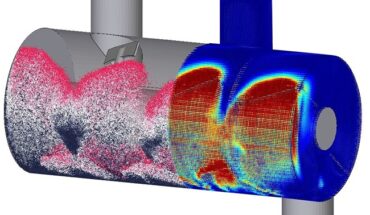
Both approaches have their place in the modern manufacturing landscape, but understanding their unique advantages is key.
Digital prototyping and traditional prototyping are two distinct approaches to product design and testing. Both have their unique advantages, but understanding the differences—particularly in terms of time, cost, accuracy, flexibility, and collaboration—can help manufacturing engineers and their management teams make informed decisions about which approach best suits their needs.
Definition and Process Overview
Traditional prototyping involves the physical creation of a product or component, usually using materials that are similar to those intended for the final product but sometimes out of cheaper plastic or even clay. These prototypes are often built manually, either by hand or using a subtractive manufacturing process like milling or machining.
The process begins with a design, followed by building a physical model through methods such as 3D printing, CNC machining, or injection molding. After a prototype is built, it’s tested for form, fit, and function. Based on test results, the prototype may be revised, and the process starts at the beginning again.
Digital prototyping, on the other hand, is entirely virtual. It involves using Computer-Aided Design (CAD), Computer-Aided Engineering (CAE), and other advanced simulation tools to create a digital representation of the product. Engineers simulate the behavior, performance, and manufacturability of a design without having to physically produce it. These digital prototypes are analyzed for structural integrity, aerodynamics, thermal properties, and other parameters before any physical prototype is made. Virtual testing (e.g., finite element analysis, computational fluid dynamics) helps refine the design.
Time and Speed
Traditional prototyping often requires significant lead times. The process of creating a physical prototype can take days to weeks, depending on complexity, material availability, and equipment setup. Each iteration of a prototype requires time to fabricate, test, analyze, and refine. Changes made to the design often require a new prototype, adding additional time, effort and cost.
Digital prototyping dramatically reduces this time. Since the prototype exists digitally, changes can be made and tested almost instantaneously. Engineers can simulate hundreds or even thousands of design iterations in a fraction of the time it would take to build physical models. For instance, a simulation run that might take hours could result in immediate feedback on the design’s performance, which could take days or weeks with traditional methods.
Cost Implications
The costs associated with traditional prototyping can be substantial. Creating physical models incurs material costs, labor, and machine time. Costs multiply quickly if numerous iterations of a design are needed, especially if the prototype uses expensive materials. Furthermore, testing the physical prototype might lead to additional expenses for failure analysis, repairs, and remanufacturing of prototypes.
With digital prototyping, costs are primarily associated with software licenses, computing power, and highly skilled engineers. Digital models also allow for the identification of design flaws early in the process, reducing the need for costly last-minute changes or expensive rework in the manufacturing phase.
Flexibility and Iteration
Traditional prototyping is inherently less flexible. Making design changes typically requires rebuilding or altering physical components, which can be time-consuming and costly. Even minor adjustments, such as adjusting a hole diameter or reshaping a contour, likely requires a full rebuild of the prototype, adding cost and time.
On the other hand, digital prototyping offers virtually unlimited flexibility. Changes can be made to the digital model instantly, and simulations can be rerun in a matter of hours, enabling rapid iteration. This is especially beneficial when testing alternative design solutions or optimizing performance criteria. The ability to quickly explore a wide range of design possibilities without incurring significant costs or rework gives engineers a powerful tool for refinement.
Accuracy and Precision
Traditional prototyping is limited by the precision of the manufacturing process. Even with advanced machinery, minor inaccuracies can creep into prototypes due to human error, material imperfections, or mechanical limitations of the equipment used. These inaccuracies may be evident in part dimensions, surface finish, or overall assembly.
Digital prototyping, conversely, allows for a level of precision that is only limited by the software and initial design. CAD software offers highly accurate digital representations, and simulations can handle various factors, such as material properties, forces, or motion to ensure the prototype performs as intended. This accuracy translates into better-prepared designs before any physical creation takes place
Collaboration and Communication
Collaboration and communication in traditional prototyping are often hindered by geographic and logistical limitations. Engineers, designers, and manufacturers need to meet in person to discuss changes or challenges with the physical prototypes. This can lead to delays in feedback and miscommunications, especially if teams are spread out over multiple locations.
With digital prototyping, collaboration is streamlined. Design files can be shared and worked on in real-time, regardless of location. Virtual simulations provide a common platform for discussing and analyzing design performance, which leads to more effective decision-making and quicker responses to design challenges. Cloud-based collaboration, where multiple engineers or departments can simultaneously evaluate a design, further accelerate product development.
Testing and Validation
Traditional prototyping allows for physical testing, which can be invaluable for assessing the real-world behavior of a product, particularly in cases where external forces such as temperature, pressure, or human interaction must be accounted for. However, physical testing is often time-consuming and limited in scope.
In contrast, digital prototyping uses advanced simulations to test a product’s performance under various conditions without requiring physical tests. Through techniques like finite element analysis (FEA), computational fluid dynamics (CFD), and kinematic simulations, digital prototypes can be subjected to virtual stress tests, fatigue analysis, and other scenarios to predict real-world performance with a high degree of accuracy. While some physical testing is still essential, digital simulations provide a more cost-effective and faster way to validate designs.
Sustainability Considerations
Traditional prototyping can generate substantial waste, especially when several iterations are required. Scrap material, failed parts, and excessive energy consumption are all environmental concerns associated with physical prototype manufacturing. Additionally, transportation of parts, sometimes across global supply chains, contribute to the carbon footprint.
Being a virtual process, digital prototyping minimizes material waste and, to a degree, energy consumption. Engineers can validate designs thoroughly before committing to physical manufacturing, reducing the need for excessive iterations and material usage.
The key difference between digital prototyping and traditional prototyping lies in their approach to design, iteration, and testing. Digital prototyping offers faster iteration, cost savings, higher accuracy, and a more sustainable process. It enables manufacturers to avoid costly mistakes, optimize designs before they are physically created, and streamline collaboration across teams.
However, it is important to note that digital prototyping does not entirely replace physical prototypes; certain testing and validation processes still benefit from real-world interaction. Both approaches have their place in the modern manufacturing landscape, but understanding their unique advantages helps in leveraging each at the right stage of product development.





